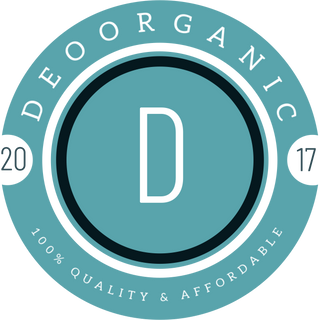DOCUMENT
Description: Phenoxyethanol is an oily, slightly sticky liquid with a faint rose-like odour. Used as a preservative in a wide variety of cosmetic and personal care products. Also used as a Fixative in perfumes .
Research shows that this ingredient is safe when used in these products.
INCI: Phenoxyethanol
Assay: 99,8%
Phenol content: Max 10 ppm
FORMULATION AND RECOMMENDATIONS
Phenoxyethanol, is the most commonly used globally approved preservative in personal care formula- tions. It is extremely easy to use in most types of formu- lations and is chemically very stable. Phenoxyethanol has a broad spectrum antimicrobial activity against bacteria, yeasts, and mold. The typical use level in formulations is 0,5 – 0,8%, and often combined with other preservatives, like Ethylhexyl Potassium sorbate, Dehydroacetic acid The European Economic Community (EEC) Cosmetics Derivative and the Cosmetics Regulation of the European Union approved Phenoxyethanol in con- centrations up 1%.
PHENOXYETHANOL USES
Known as the most commonly used synthetic preservative in skin care and cosmetic products, and also used as a fixative for perfumes.
As a preservative, its function is to prevent microbial growth in skin care formulations. However, you'll typically find it in water-based products, or products where water may be introduced.
Oil-based or anhydrous products like facial oils and balms usually don't require preservatives at all since microbes can't grow in these environments.
Companies use phenoxyethanol as a "safer" alternative to parabens (a synthetic class of broad-spectrum preservatives), and will often market their products as paraben-free (since many people know to stay away from parabens).
HOW IT'S CREATED
Phenoxyethanol is an ethoxylated compound, which means It's formed by the chemical reaction between known carcinogen ethylene oxide, and phenol (a corrosive and toxic compound from either natural or synthetic sources). It may also contaminate with carcinogenic toxin 1,4-dioxane (Diethylene Oxide) which generate by ethylene oxide as a by-product.
Contamination of 1,4-dioxane in products is not uncommon among conventional cosmetic brands, and even "natural" and "organic" ones either.
PRODUCTS FOUND IN
Phenoxyethanol can be found in a variety of rinse-off and leave-on products:
Moisturizers, eyeshadows, mascaras, foundation, sunscreens, shampoos, conditioners, styling gels, lip products, soap, fragrances, or typically any water-based personal care product.
OTHER NAMES FOR PHENOXYETHANOL LISTED ON PRODUCT LABELS
– Fragrance or parfum: synthetic fragrances can contain one or more of around 3,000 allowed chemicals, which includes phenoxyethanol
– Optiphen™: a mixture of phenoxyethanol and caprylyl glycol
– Rose ether 2-phenoxy-ethanol
– 2-hydroxyethyl phenyl ether
– Ethylene glycol monophenyl ether
– Phenoxytol
- NOTE
- Both the EU and Japan have restricted the usage rate of phenoxyethanol to a maximum of 1% in cosmetic products.
- using above 1 % can cause skin irritation
"NATURAL" COMPANIES THAT USE IT
Many conventional brands use phenoxyethanol in their products, Brands like
-Aveeno,Burt's Bees,The Honest Company The Body ShopDerma EAlba Botanica- Lush
Description: Phenoxyethanol is an oily, slightly sticky liquid with a faint rose-like odour. Used as a preservative in a wide variety of cosmetic and personal care products. Also used as a Fixative in perfumes .
Research shows that this ingredient is safe when used in these products.
INCI: Phenoxyethanol
Assay: 99,8%
Phenol content: Max 10 ppm
FORMULATION AND RECOMMENDATIONS
Phenoxyethanol, is the most commonly used globally approved preservative in personal care formula- tions. It is extremely easy to use in most types of formu- lations and is chemically very stable. Phenoxyethanol has a broad spectrum antimicrobial activity against bacteria, yeasts, and mold. The typical use level in formulations is 0,5 – 0,8%, and often combined with other preservatives, like Ethylhexyl Potassium sorbate, Dehydroacetic acid The European Economic Community (EEC) Cosmetics Derivative and the Cosmetics Regulation of the European Union approved Phenoxyethanol in con- centrations up 1%.
PHENOXYETHANOL USES
Known as the most commonly used synthetic preservative in skin care and cosmetic products, and also used as a fixative for perfumes.
As a preservative, its function is to prevent microbial growth in skin care formulations. However, you'll typically find it in water-based products, or products where water may be introduced.
Oil-based or anhydrous products like facial oils and balms usually don't require preservatives at all since microbes can't grow in these environments.
Companies use phenoxyethanol as a "safer" alternative to parabens (a synthetic class of broad-spectrum preservatives), and will often market their products as paraben-free (since many people know to stay away from parabens).
HOW IT'S CREATED
Phenoxyethanol is an ethoxylated compound, which means It's formed by the chemical reaction between known carcinogen ethylene oxide, and phenol (a corrosive and toxic compound from either natural or synthetic sources). It may also contaminate with carcinogenic toxin 1,4-dioxane (Diethylene Oxide) which generate by ethylene oxide as a by-product.
Contamination of 1,4-dioxane in products is not uncommon among conventional cosmetic brands, and even "natural" and "organic" ones either.
PRODUCTS FOUND IN
Phenoxyethanol can be found in a variety of rinse-off and leave-on products:
Moisturizers, eyeshadows, mascaras, foundation, sunscreens, shampoos, conditioners, styling gels, lip products, soap, fragrances, or typically any water-based personal care product.
OTHER NAMES FOR PHENOXYETHANOL LISTED ON PRODUCT LABELS
– Fragrance or parfum: synthetic fragrances can contain one or more of around 3,000 allowed chemicals, which includes phenoxyethanol
– Optiphen™: a mixture of phenoxyethanol and caprylyl glycol
– Rose ether 2-phenoxy-ethanol
– 2-hydroxyethyl phenyl ether
– Ethylene glycol monophenyl ether
– Phenoxytol
- NOTE
- Both the EU and Japan have restricted the usage rate of phenoxyethanol to a maximum of 1% in cosmetic products.
- using above 1 % can cause skin irritation
"NATURAL" COMPANIES THAT USE IT
Many conventional brands use phenoxyethanol in their products, Brands like
-Aveeno,Burt's Bees,The Honest Company The Body ShopDerma EAlba Botanica- Lush

